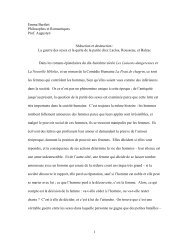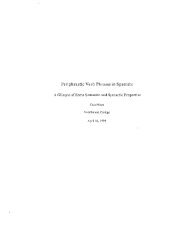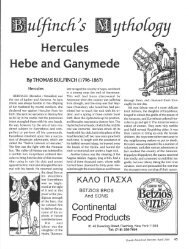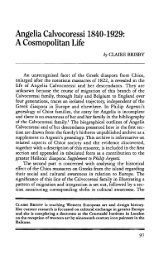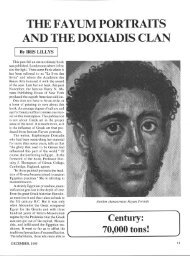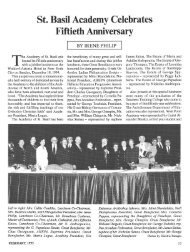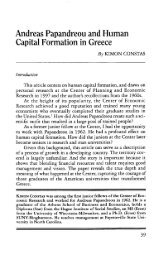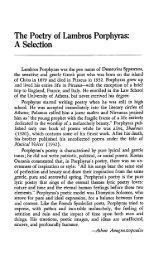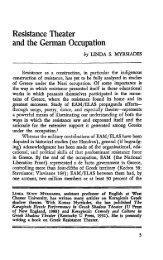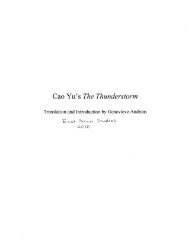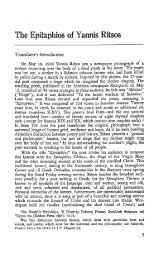Translating Neruda: Femininity and Sensuality ... - Triceratops Home
Translating Neruda: Femininity and Sensuality ... - Triceratops Home
Translating Neruda: Femininity and Sensuality ... - Triceratops Home
Create successful ePaper yourself
Turn your PDF publications into a flip-book with our unique Google optimized e-Paper software.
Mueller 32<br />
<strong>Neruda</strong>’s verse in this poem is striking because of the humanizing way in which<br />
he describes the arc of the storm. This clarity of representation comes through in Tarn’s<br />
verse, <strong>and</strong> the feminine nature of the storm is almost more evident in English, because<br />
while the conjugation of Spanish verbs is the same for the third-person masculine or<br />
feminine, in English the addition of the feminine pronoun is required. Therefore, every<br />
time the storm undertakes an action, such as “quiso,” “llegó,” “quería,” etcetera, in<br />
English it is translated as “she wanted,” “she arrived,” “she longed,” <strong>and</strong> so forth.<br />
Certain word choices by Tarn seem to further play up the femininity of the storm,<br />
building on the prominence of Greek myth in Western literary tradition. His use of<br />
“quiver of fire” in place of <strong>Neruda</strong>’s “saco de fuego” (“sack of fire”) plays off of the<br />
Olympian scene of thrown lightning bolts <strong>and</strong> calls to mind another famous powerful<br />
woman, Diana the Huntress. A similar change later on, from “preparadora de cosechas”<br />
(“preparer of harvests”) to “mother of harvests,” similarly echoes back to powerful Greek<br />
goddesses, this time to Demeter, Goddess of the Harvest. These allusions are not present<br />
in the original text, <strong>and</strong> can be read as a domesticating attempt both to give the poem a<br />
familiar feel to the target audience, <strong>and</strong> also to legitimize the use of archaic language. By<br />
alluding to classical myths in his translations, Tarn also associates his text with those<br />
translations of classical texts whose use of archaism is more commonly accepted as it<br />
creates a suggestion of “the antiquity of the original work” (Roberts 268).<br />
In Maria Jacketti’s version of “Oceana,” the most visible translational<br />
transformation is her alteration of the original punctuation. Many of her changes seem to<br />
have a domesticating effect, as they break up some of the longer phrases into shorter, less<br />
complicated ideas. This poem is marked in Spanish by continuous <strong>and</strong> repetitive verse,



